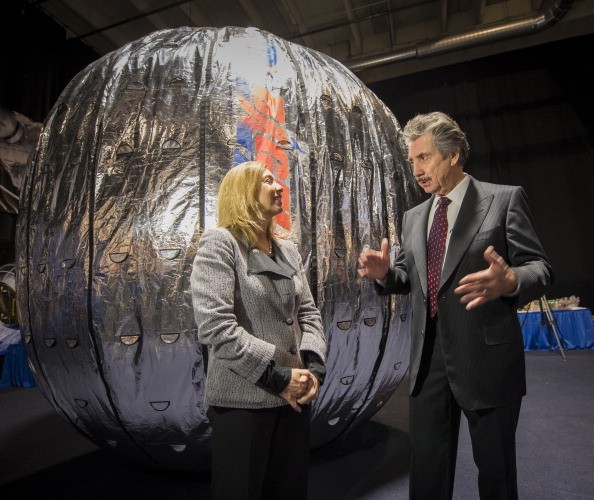SpaceX will be launching an inflatable habitat to the International Space Station in hopes to develop technology that will let inhabitants stay longer in space. The habitat will be attached to the Tranquility module and will stay for two years.
The inflatable habitat is a prototype called the Bigelow Expandable Activity Module made by the Bigelow Aerospace company, according to Wired. By staying at the station for two years, the company is hoping that the habitat will prove it worthy of inhabitants. Rather than living in it, the space station crew will be running some tests at the start.
On April 8, Friday, the SpaceX Falcon 9 rocket will have the Dragon capsule with the BEAM inside it, and will also carry 3,800 pounds of supplies and experiments. When the habitat reaches the station, Canadarm2, the robotic arm, will attach it to Node 3 in mid-April. Astronauts will press a button that will begin its automated inflation at the end of May or by the beginning of June.
The habitat is estimated to be 13 feet long and 10.6 across, with a volume of 565 cubic feet. NASA's Rajib Dasgupta compared its size to a small bedroom and will be empty for most of its stay on the space station. Only four times in a year will the habitat have visitors and have them stay there, but it will only be for three hours where the astronauts will collect data.
After BEAM's two years stay on the space station, the robotic arm will come back around to unhook it from the station. It will go back to earth, burning up in the atmosphere 290 days after being unhooked.
Retired astronaut George Zamka said to USA Today that this will be the first time that humans will be inside an inflatable habitat in space. The habitat will be strong enough that it will not feel like a balloon, he added.
The engineers that created the habitat also said to the publication that it will not be easy to damage or puncture the surface of the habitat. It will have thick walls of multiple layers of fabric and the material will be like Kevlar and any space trash that may bump it will not puncture the habitat.
Check out the Bigelow Aerospace promotional video below:



























